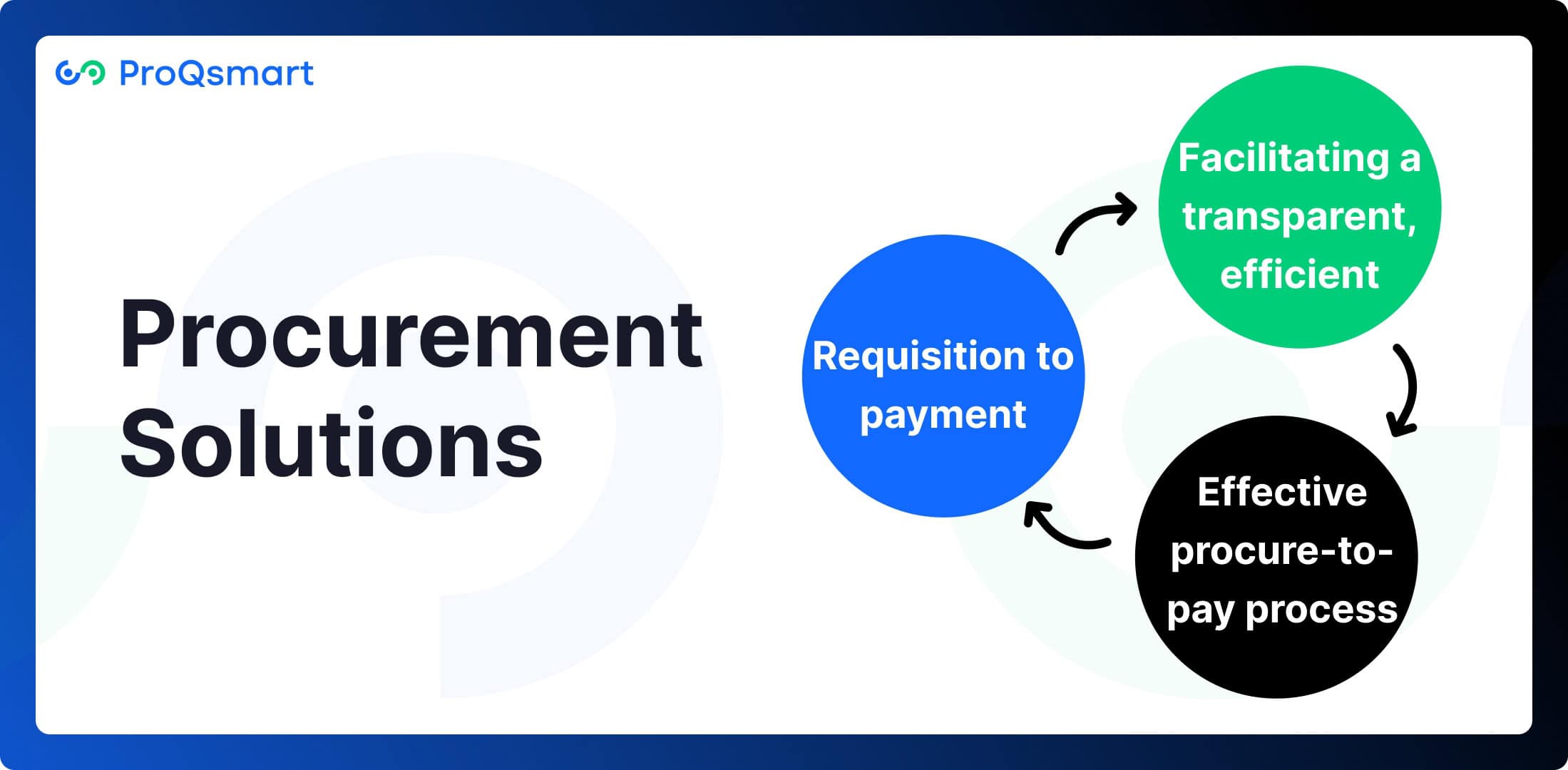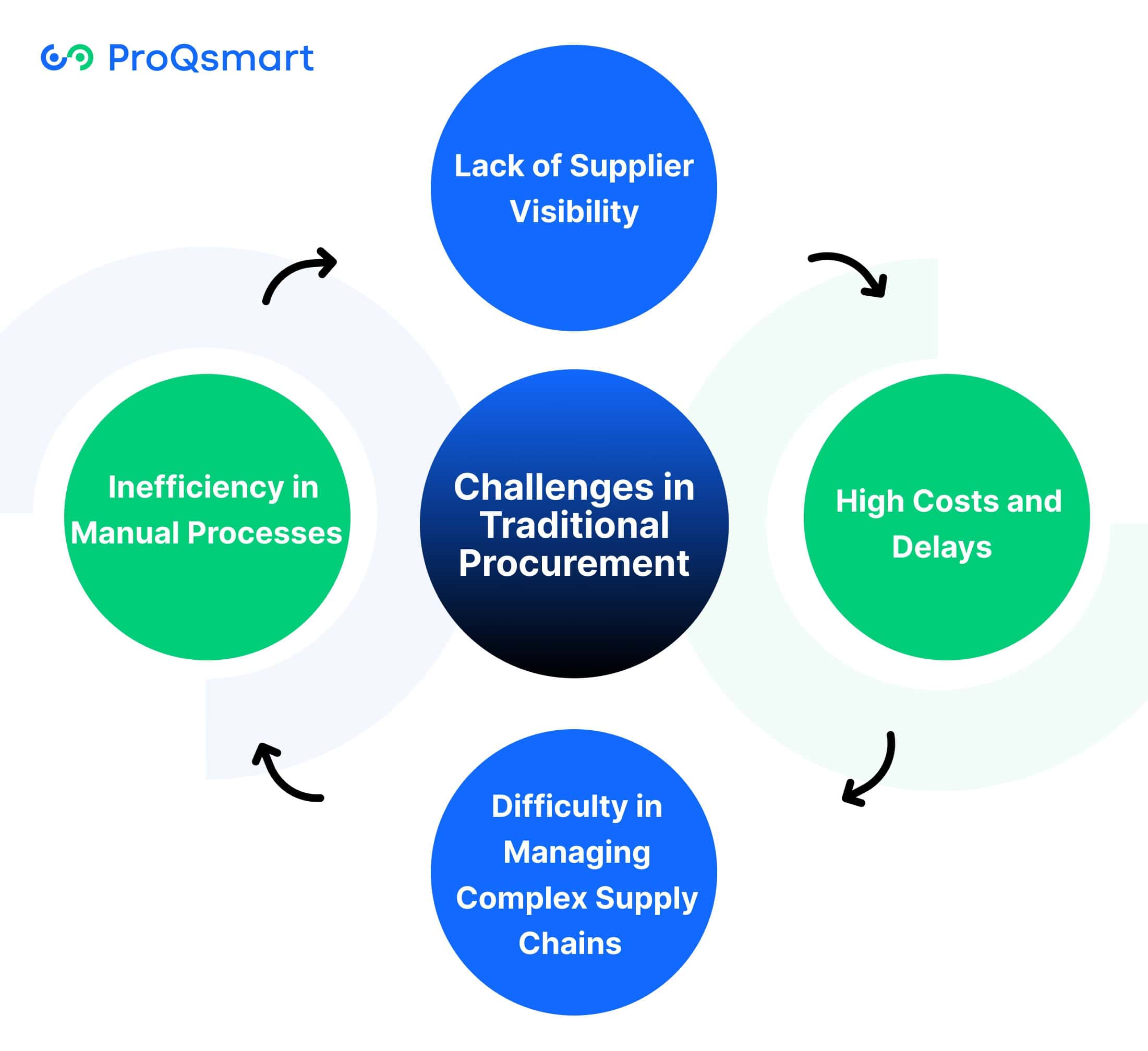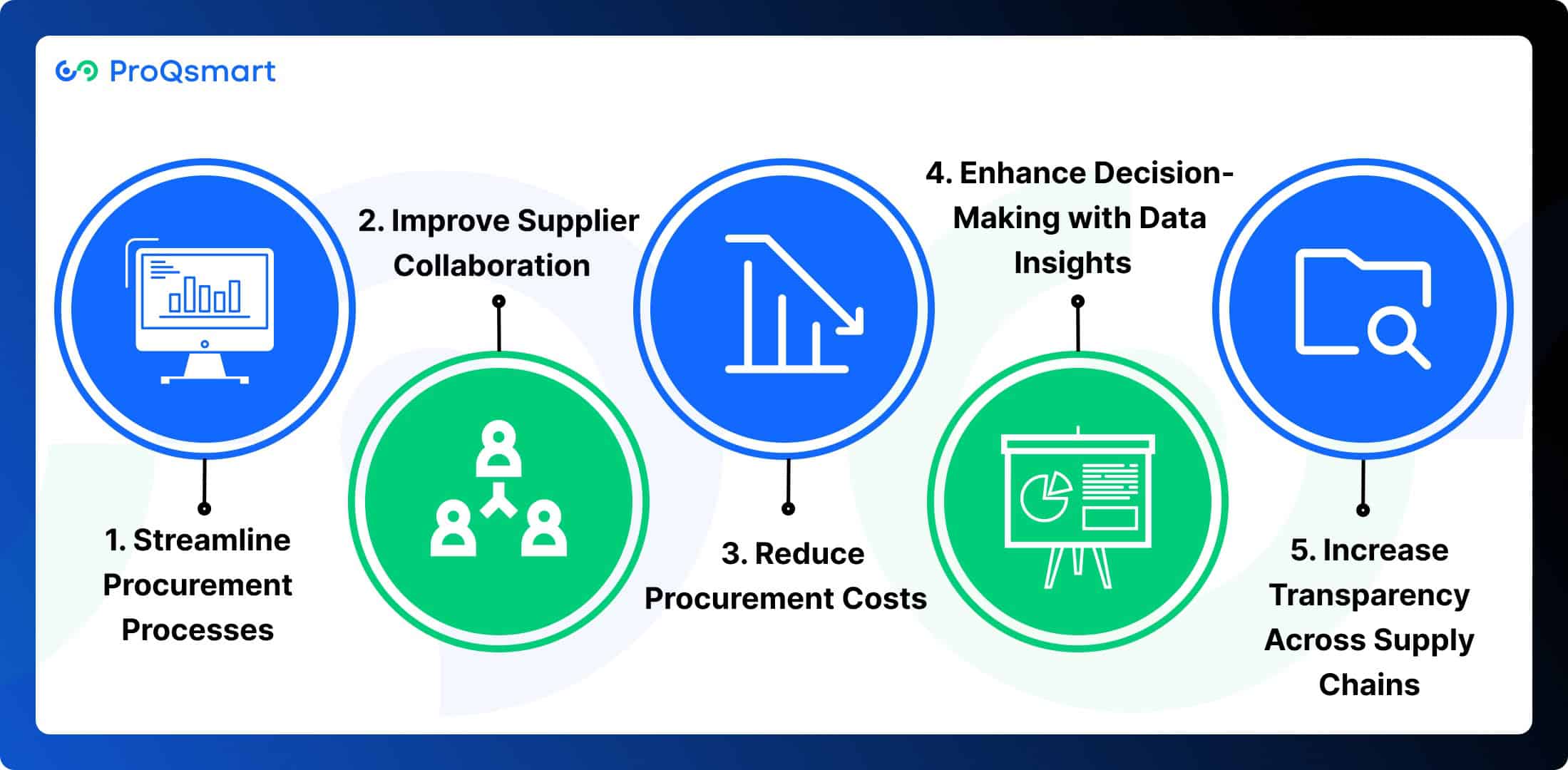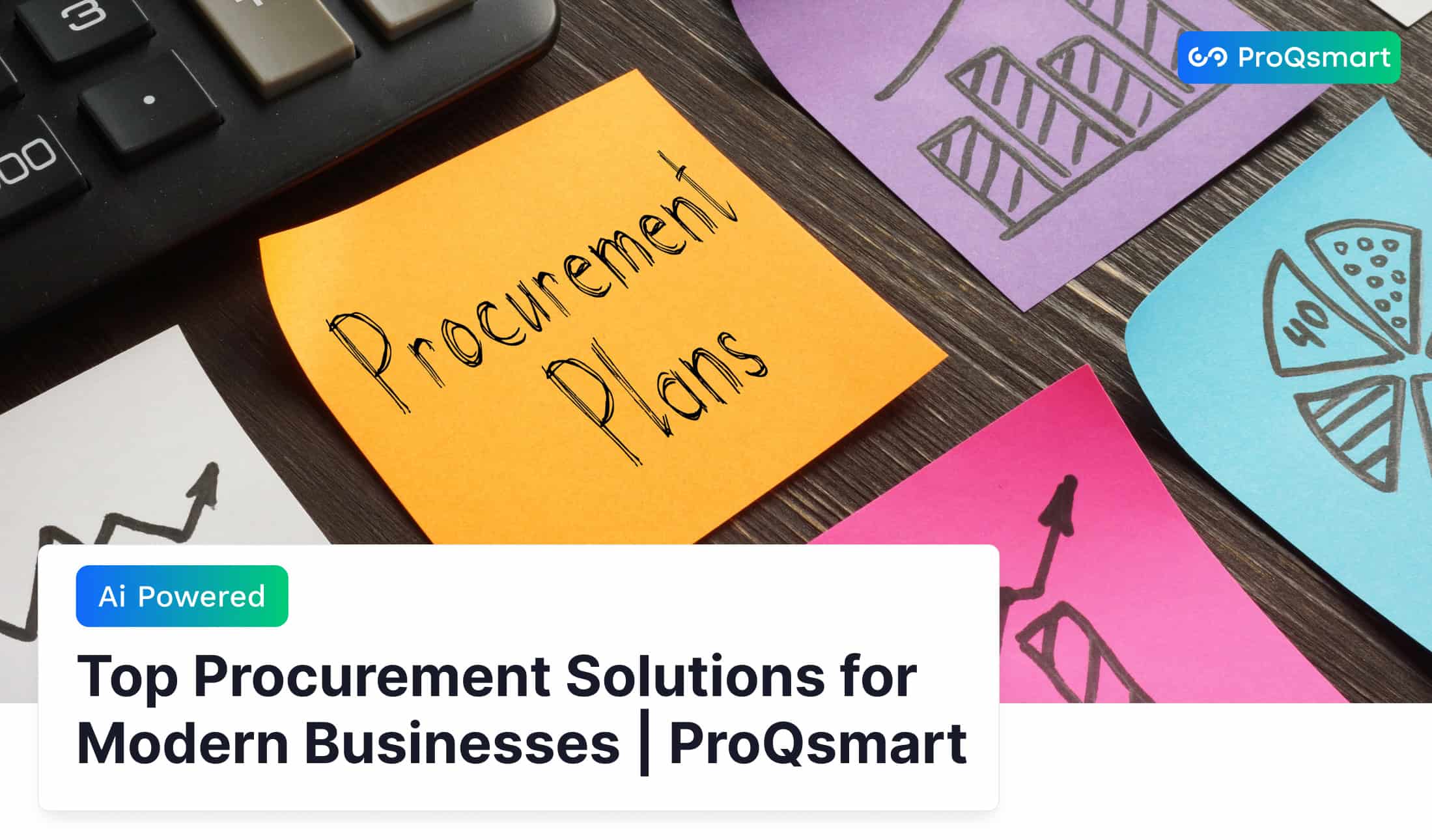Procurement solutions are increasingly delivering efficiency and cost savings that help businesses thrive in a competitive, modern marketplace. Through good, strategic efforts, entities can better maintain supplier relationships, internal processes, and help mitigate issues of fraud and abuse.
These solutions are more than tools – they’re an essential part of getting repeatable results and building the capacity for long-term sustainable growth. Whether sourcing dependable vendors or negotiating ironclad contracts, procurement solutions offer practical, definitive approaches to addressing some of the thorniest challenges.
They make the process easier, save taxpayers money, and increase transparency all the way down the supply chain. Businesses are seeing big wins from smoother workflows and more data-driven decision-making. Understanding and utilizing the right procurement solutions empowers professionals to stay ahead of market trends and meet organizational goals effectively
What Are Procurement Solutions?

Procurement solutions are a category of software and technology designed to optimize purchasing processes and reduce the burden of procurement operations. These comprehensive enterprise systems allow agencies to manage each phase of the procurement lifecycle—from requisition to payment—facilitating a transparent, efficient, and effective procure-to-pay process.
With digital procurement tools, invoices can be automatically scanned and processed at each step. This capability saves hours of manual data entry and document scanning. This saves time and is more error-proof.
The right procurement solution is beneficial because it can seamlessly integrate with other business systems. This means solutions that span systems such as enterprise resource planning (ERP) and accounting platforms. This integration centralizes all procurement activities and allows supplier information to flow easily across the entire organization.
For example, three-way matching—an invoice, purchase order, and receipt—are automated, allowing for no-error reviews before payments are released. Intuitive designs with user-friendly interfaces are key to achieving the best possible learning and procurement experience. They democratize procurement functions across teams, regardless of technical expertise, and many solutions can be customized to fit the unique demands of specific industries, offering flexibility for diverse business needs.
Impact of Procurement Solutions on Modern Business Operations
Procurement solutions are critical for gaining a competitive advantage in today’s third-party market. They enable better control over costs and budgets by centralizing procurement data into a single, user-friendly platform. This centralization allows finance teams to make informed and strategic decisions based on comprehensive data analysis.
Additionally, these solutions improve vendor management, leading to stronger supplier relationships and enhanced performance. By automating manual processes, procurement solutions address inefficiencies that affect 80% of procurement teams.
They also help organizations maintain compliance with industry regulations and standards, which is increasingly important. Enhanced operational efficiency is achieved as repetitive tasks like approval workflows and contract management are automated. For instance, digital contract management provides immediate visibility into active agreements, allowing for quick updates and revisions.
Finally, procurement solutions support strategic sourcing initiatives by delivering data-driven insights for smarter supplier selection and cost-saving opportunities.
How Procurement Solutions Impacts Supply Chain Management?
Procurement solutions are critical to driving efficiencies across supply chain operations. Through better visibility and greater access to real-time data, they provide greater agility to help organizations make faster, more informed decisions.
For instance, when circulating documents for approval, digital systems can notify relevant stakeholders if there’s a delay, preventing miscommunication or hold-ups. This new level of transparency leads to a more coordinated collaborative supply chain ecosystem, improving alignment and creating value through enhanced relationships.
Risk mitigation is perhaps the most important benefit. Procurement solutions enable businesses to proactively mitigate potential supply chain disruptions by tracking supplier performance and ensuring adherence to quality standards.
For example, automating supplier evaluations removes the human factor from the process, making it objective and timely, and the risk of errors is minimized. In addition to helping businesses meet their compliance and reporting requirements, these tools help keep operations running smoothly across the supply chain.
Challenges in Traditional Procurement

Inefficiency in Manual Processes
Labor-intensive procurement processes often lead to delays in approvals and increased workloads for procurement teams. Without automation, tasks such as purchase order approvals, invoicing, and reporting depend heavily on manual data entry, which raises the risk of costly mistakes.
For example, errors in entering supplier details can cause payment delays or mismatches in record-keeping. Additionally, traditional document handling makes it easy for files to be misplaced, creating logistical challenges in tracking orders effectively.
Moreover, the lack of optimized workflows results in wasted time on duplicative tasks. Procurement staff may spend hours searching for specific product information when dealing with smaller suppliers, significantly limiting their productivity. To achieve higher operational efficiency, it is essential to transition from manual processes to automated systems.
Lack of Supplier Visibility
Lack of visibility into supplier performance is one of the biggest challenges in traditional procurement. Without centralized, real-time data, fulfillment and compliance by suppliers and adherence to contract terms is nearly impossible to measure, putting organizations at unnecessary risk.
This lack of transparency can cut off significant cost-saving opportunities. For instance, lost visibility into supplier market dynamics can result in undesirable contract conditions.
For those businesses that have to manage thousands—or even hundreds of thousands—of suppliers, manually managing and onboarding suppliers quickly becomes unwieldy. A centralized system, one that consolidates all supplier data, can give organizations complete insights into supplier performance to help them make more informed decisions and manage risk better.
High Costs and Delays
The public financial burden of traditional procurement is visible through the inflated costs and project delays. Manual inefficiencies, like maverick spending, only add to the costs, going well beyond the established budgetary parameters.
Added to the mix, delays in approval processes or late deliveries further disrupt project timelines, hurting customer satisfaction and profitability. These high procurement costs impact the organization’s bottom line, highlighting the ongoing necessity for more efficient, cost-effective strategies.
Difficulty in Managing Complex Supply Chains
Traditional procurement practices fail to address the complexities of multi-tiered supply chains. Keeping track of multiple suppliers and contractors can be overwhelming, particularly as you try to adapt to abrupt changes in the market.
For example, it can take 30 to 45 days to onboard a new supplier, adding to the length of procurement cycles. Technology-driven solutions cut through these complexities, making sure that even the most global supplier networks can be maintained seamlessly.
How Procurement Solutions Address Challenges

1. Streamline Procurement Processes
Procurement solutions play a crucial role in automating time-consuming and repetitive tasks, such as creating purchase orders, processing invoices, and communicating with suppliers. By automating these activities, professionals save time and can focus on more strategic decision-making.
Standardized workflows streamline and centralize operations, resulting in a repeatable and efficient procurement process. For instance, digital contract management solutions like ProQsmart simplify contract creation and execution while ensuring compliance and reducing risks.
Additionally, AI tools eliminate the need for hard-copy files, minimizing human error and facilitating faster data entry. This leads to quicker approvals and order fulfillment, enabling companies to meet fast delivery timelines and remain competitive. Furthermore, ongoing process improvements supported by digital solutions help keep procurement systems lean and agile, allowing organizations to adapt to evolving demands effectively.
2. Improve Supplier Collaboration
Improved communication channels, whether through supplier discovery tools or eProcurement platforms, foster better supplier relationships. Shared platforms with live updates create a collaborative space for this information to flow.
This helps guarantee that both parties are on the same page with project timelines and deliverables. AI-powered tools, for example ProQsmart, can help track supplier performance and compliance, promoting accountability and trust.
Collaboration tools foster innovation by motivating suppliers to provide their insights and creative solutions. This information exchange drives cost savings and improves product quality. Proactive engagement through these platforms facilitates open discussion and allows concerns to be addressed before they become a larger problem that impacts the entire supply chain.
3. Reduce Procurement Costs
By removing high-cost administrative functions, like manual data entry or repetitive administrative tasks, automation saves both time and money. Competitive bidding capabilities that come with procurement solutions enable businesses to obtain more competitive pricing from suppliers.
For example, spend analysis tools help to identify inefficiencies in spending, allowing procurement professionals to better understand where to allocate budgets. Smart supplier management translates into better pricing deals for saving money in the long run.
Strategic sourcing takes the procurement process a step further, using analysis to guarantee that businesses get the most value for their money.
4. Enhance Decision-Making with Data Insights
Data-driven decision-making is crucial for successful procurement strategies. Procurement platforms provide real-time analytics, helping professionals make informed choices.
Historical data analysis supports forecasting, allowing businesses to anticipate future needs accurately. For example, AI-powered tools such as ProQsmart can flag irregular patterns, improving supplier evaluation and risk management.
Actionable insights derived from data improves supplier selection, allowing companies to establish strong partnerships with the right suppliers. High-quality, accurate data helps your procurement decisions reflect your organizational goals and the changing demands of the marketplace.
5. Increase Transparency Across Supply Chains
In addition, increased transparency creates a culture of accountability that builds trust among all suppliers and stakeholders. Digital procurement platforms like ProQsmart offer greater visibility at all steps in the process, from placing an order through receipt. It also offers real-time tracking systems empower teams to track shipments and respond to potential delays before they impact the supply chain.
Clear tracking of supplier compliance and performance holds them accountable and mitigates risks involved with supplier non-compliance. Improved, more transparent communication facilitated by these digital relationships improves supplier relationships, fostering a more reliable and efficient supply chain.
Features of the Best Procurement Software
AI-Powered Vendor Matching
AI technology has revolutionized vendor selection processes by providing unparalleled accuracy. Through the analysis of large datasets, AI-powered systems can help procurement teams find suppliers that best meet specialized business requirements.
Procurement software’s data-driven approach removes the guesswork, allowing procurement teams to cut through the clutter and reach the most reliable, cost-effective vendors. With machine learning, that’s taken a step further through the ability to constantly improve recommendations based on historical performance and emerging market trends.
For example, AI can identify the vendors with the best price for bulk orders, enabling procurement teams to make faster, more resource-efficient decisions. By integrating AI into the procurement software, businesses can better adapt to market changes quickly while keeping their supplier relationships healthy.
ProQsmart uses AI to automate these processes, allowing you to make better sourcing decisions backed by real-time vendor analyses.
Centralized RFQ Management System
A centralized RFQ system makes it easier to keep track of supplier quotes, since everything is handled from one easy-to-use platform. We’ve found that this combined approach accelerates supplier responses, helping everyone meet timelines without last-minute rushes.
Automated workflows cut out manual follow-ups and other redundant processes, allowing you to shift resources from tactical work to more strategic initiatives. For instance, monitoring RFQ histories allows teams to analyze suppliers according to their historical performance, encouraging data-driven decisions.
Transparency throughout the RFQ process helps foster fair competition, which almost always results in better value. ProQsmart’s e-tenders module shines here by managing document creation, distribution, and workflow automation to evaluate and award tenders while maintaining compliance and transparency.
Live Bidding and Negotiation Tools
Real-time bidding tools allow procurement teams to bid in real-time, creating a more competitive price. These tools save substantial cycle times by providing the ability to make better, faster decisions during bidding sessions.
For example, a transparent live bidding system creates a level playing field, ensuring suppliers compete fairly while businesses secure optimal deals. ProQsmart’s negotiation tools are designed to maximize supplier value by maximizing cost savings with collaborative, efficient negotiation processes.
Mobile Access for Remote Management
Mobile access is a must – today’s procurement teams need to be connected no matter where they are. Responsive and quick real-time notifications make your team quicker and more responsive, like approving a rush request instantly.
Secure mobile platforms, such as ProQsmart’s, improve collaboration by enabling internal and external stakeholders to control procurement activities from anywhere. This kind of flexibility not only streamlines operations, it protects sensitive information.
Key Considerations for Choosing Procurement Software
Assessing Business Needs and Goals
When selecting procurement software, start by identifying your organization’s specific needs, focusing on pain points like supplier management or sourcing strategies, and aligning them with broader business goals such as cost reduction or compliance. If sustainability is a priority, choose software with robust reporting tools to effectively track green initiatives. Understanding current workflows is crucial; mapping existing processes can reveal inefficiencies that the new software should address.
Involving key stakeholders in the evaluation process ensures their insights guide the selection, balancing the needs of both procurement and finance teams. Finally, develop a clear strategy outlining your objectives—whether saving money or increasing transparency—to help you find the right solution.
Evaluating Features and Scalability
Procurement software needs to address your business requirements today while being able to scale and grow alongside your business tomorrow and beyond. Identify features that serve your key needs, such as tracking supplier performance or creating automated workflows.
For example, ProQsmart’s AI-driven procurement platform provides solutions such as e-tenders and collaboration in real-time to streamline processes and build stronger supplier relationships.
Scalability is extremely important. Whether your supplier base triples or your procurement needs change, the software should accommodate you without a additional expense. Long-term viability is important as well, so look at the provider’s track record and dedication to continuing innovation.
Ensuring Ease of Integration and Use
Ease of software integration with your current systems, such as ERP or accounting software, is critical. Modern APIs make this a much more efficient process, saving both time and effort.
On average, implementation takes weeks to months, factoring in planning and training. A clean, intuitive interface ensures quicker staff adoption, particularly in procurement activities.
ProQsmart, for example, automates workflows and encourages collaboration, making it easy for teams to work together on projects. Additionally, dedicated support and consistent feedback loops keep the procurement management software current and improving over the years.
Conclusion
Modern procurement solutions deliver efficiency, clarity, and control to the complex buying process. They reduce costs, save time and boost supplier relationships. Empowered with the right tools, teams are able to spend their time on more strategic work rather than chasing down paperwork or backtracking to correct mistakes. The right software provides intuitive, easy-to-learn features, robust real-time data, and enterprise-level security to help streamline your workflows and make your job easier.
Selecting an enterprise system doesn’t happen overnight. Consider your immediate needs, budget, and long-term vision. Find solutions that grow alongside your business and integrate into your team’s everyday workflows.
This is where procurement comes in as a key driver of success. When you invest in smart, modern solutions, you reinforce and improve the productivity of your operations, and energize your bottom line. ProQsmart offers advanced features designed to simplify procurement processes and enhance supplier management. Explore ProQsmart today or book a demo to see how it can transform your procurement strategy.
FAQs
What are procurement solutions?
Procurement solutions are essential tools or software that organizations utilize to automate and optimize their purchasing processes, enhancing the procurement efforts for sourcing, buying, and managing suppliers while ensuring compliance and driving efficiency.
How do procurement solutions address traditional procurement challenges?
Procurement solutions address these issues by automating all manual tasks, streamlining the procurement process, eliminating errors, and improving communication between all parties. They centralize data, enhance vendor management, improve transparency, and lead to more informed decision-making, solving inefficiencies often found in traditional procurement practices.
What features should the best procurement software have?
ProQsmart offers procurement management software that includes automation, supplier management, and customizable workflows, ensuring maximum efficiency and scalability in procurement activities.
What are the benefits of implementing procurement software?
Procurement solutions, such as ProQsmart, streamline the procure-to-pay process, saving time and cutting costs while enhancing compliance and visibility, ultimately fostering stronger vendor relationships and improving procurement activities.
How do I choose the right procurement software for my business?
Look for a procurement solution that prioritizes user-friendliness, scalability, integration, and support. Procurement software like ProQsmart delivers customized e procurement solutions to fit your unique business requirements.
Is procurement software suitable for small businesses?
Procurement software solutions, like ProQsmart, are highly scalable, providing an affordable procurement solution for small businesses. This tool enables them to save time and money, ultimately boosting productivity
Why should I choose ProQsmart for procurement solutions?
ProQsmart offers a powerful suite of cloud-based procurement solutions that streamline operations, including essential procurement management software features like AI-powered vendor matching, efficient purchase requisition management, and real-time order tracking. Additionally, it enhances supplier relationships through automated communication and robust reporting tools, making it an ideal choice for businesses of any size.



